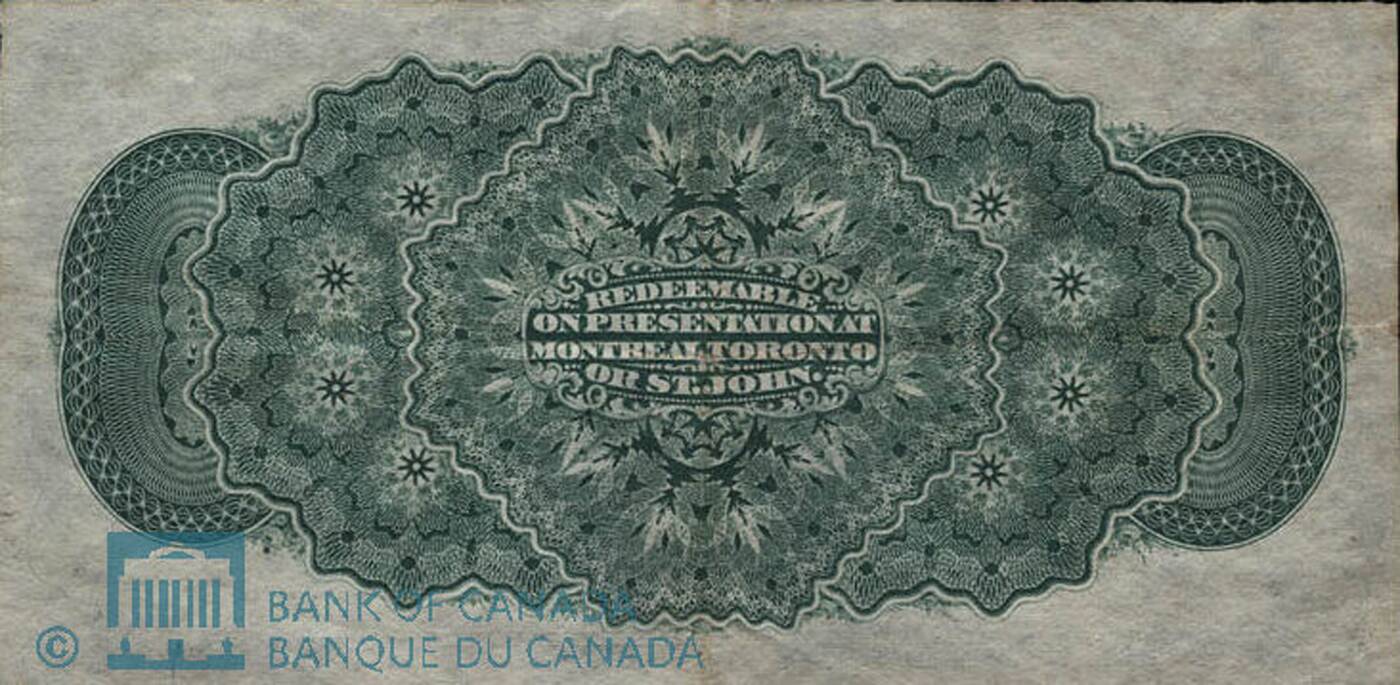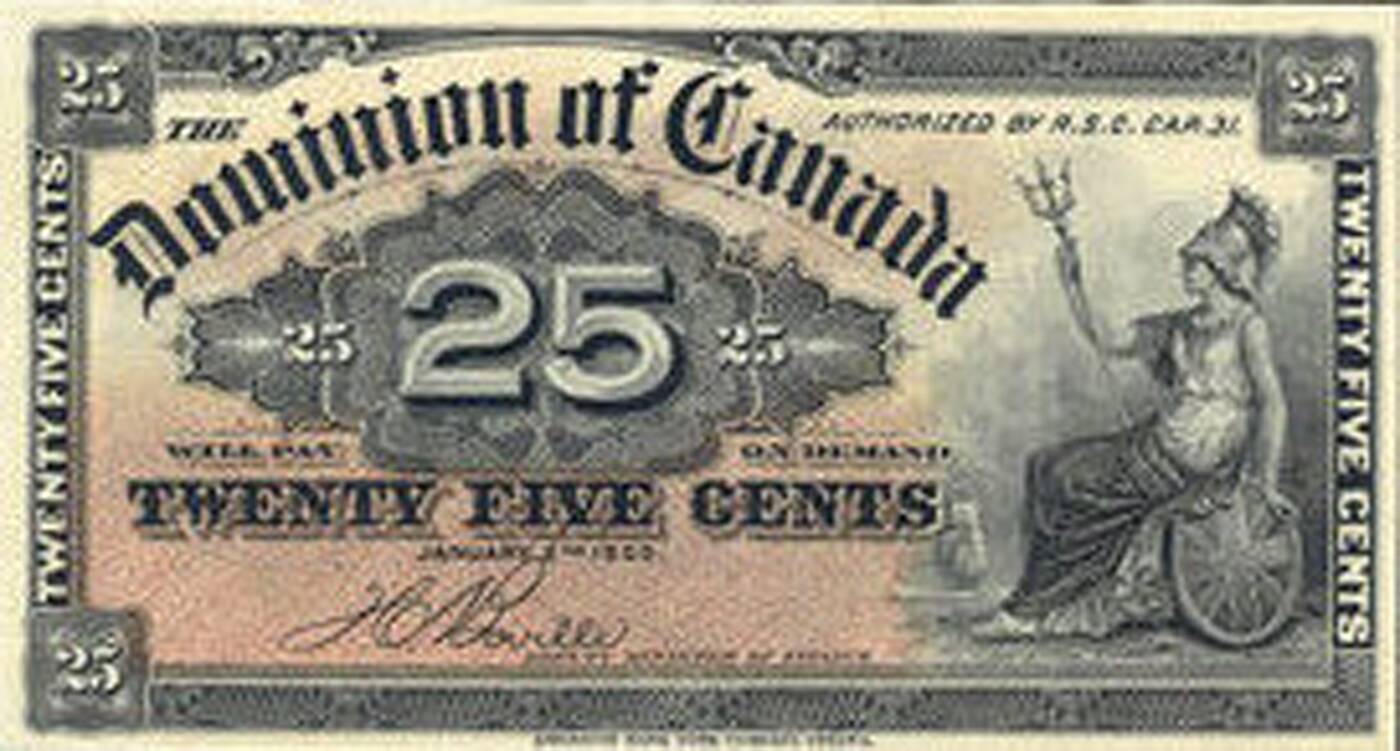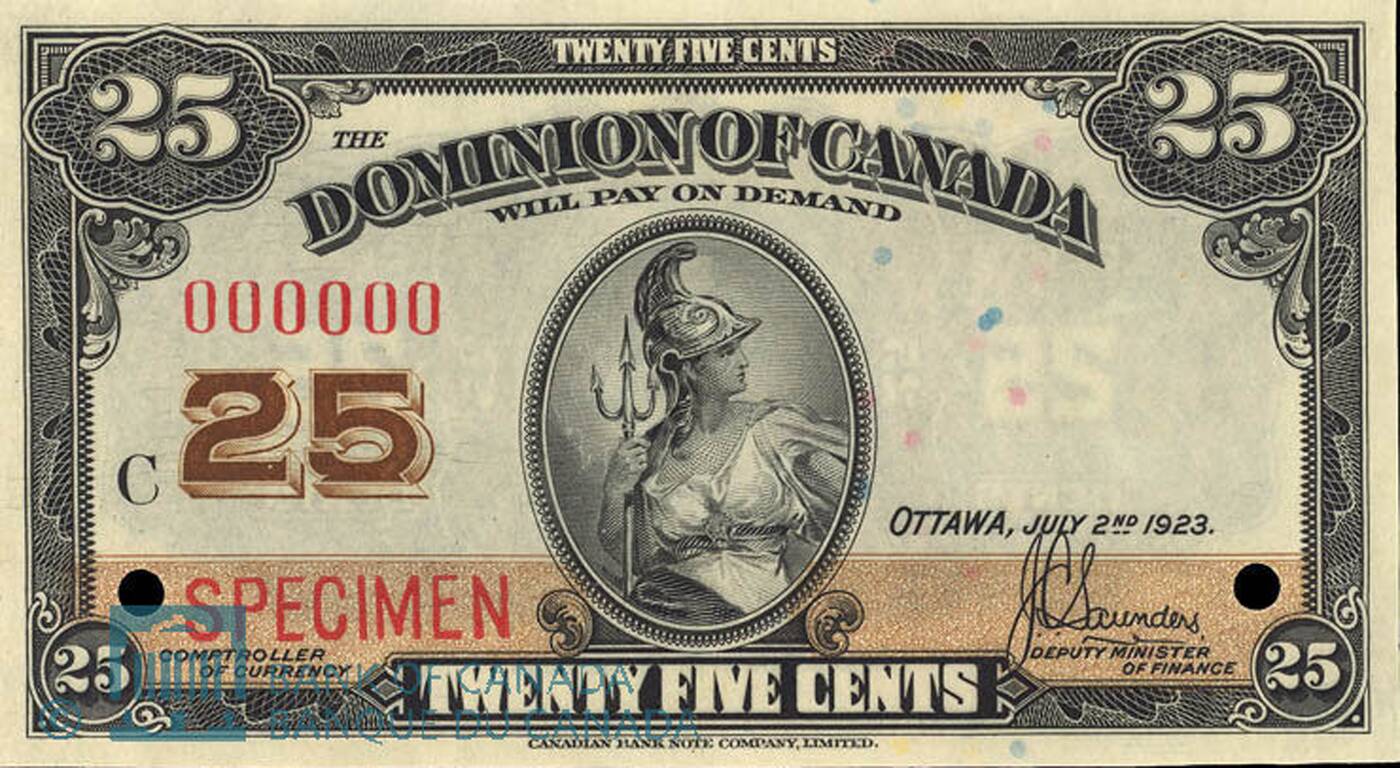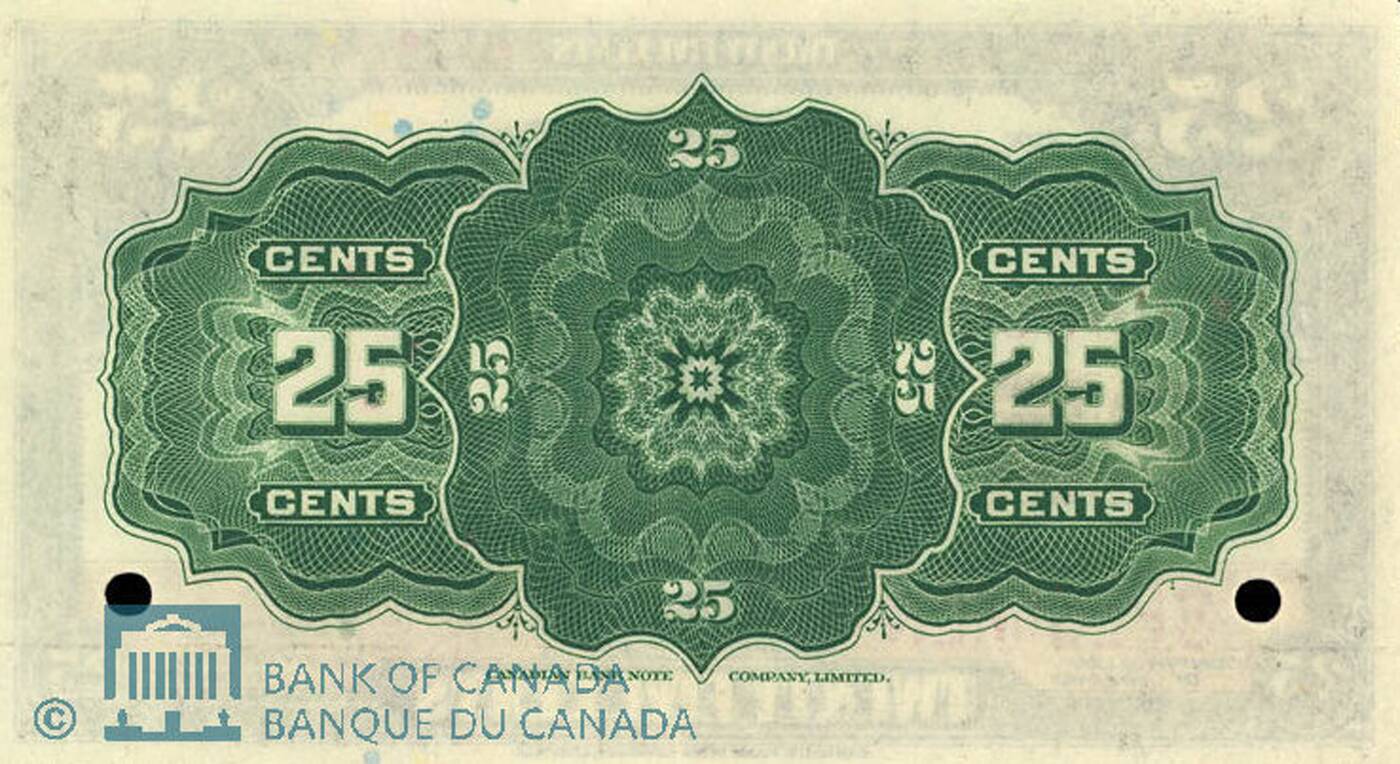
The history of Canada's 25-cent note
Canada used to have a 25-cent note that first appeared in 1870. The bill was meant to be a temporary solution to an ongoing problem, and many were even against it. However, it ended up being in circulation for 65 years.
According to Canadian Government Paper Money, 25-cent and 50-cent silver coins in the US depreciated by 5 per cent compared to gold during the American Civil War. Since Canada received these coins "at full face value," the coins poured into the country.
This would end up having a more widespread effect.
Since banks and post offices refused to accept these American coins, retailers had no choice but to sell them at a discount to brokers. In turn, these brokers sold the silver to manufacturers and buyers of grain and cattle.
"Thus the cycle repeated, and the 'American silver nuisance' resulted in hardship to farmers, merchants, and factory workers who had no choice but to accept their losses," states the book.
The flood of American silver had other effects: $1 and $2 Province of Canada notes were being crowded out of circulation.
To combat this, in 1870, the minister of finance, Sir Francis Hincks, suggested that the government buy American silver at a discount, export it, and artificially lower its value (80 cents on the dollar)
"to ensure against its return to the country." In its place, Canada would order its first silver coins from the Royal Mint in London.
Until then, 25-cent notes would be printed while the coins were prepared.
The banks were not onboard.
They didn't want these "shinplasters" (a term believed to be used by soldiers who used fractional US notes to prevent their boots from chafing). But these notes became acceptable because they could be redeemed in gold at a specific price.
Hincks' efforts worked — American silver was sent back to the US, while the rest was sent to England as bullion. However, while his plan worked out, there was one thing he didn't anticipate.
Despite being a temporary solution, these "shinplasters" would become so popular that they'd be in circulation for the next 65 years.
The note comes in three varieties.
1870

Bank of Canada Museum
The first note shows Britannia with a helmet and features a black design with a green "25" tint.

Bank of Canada Museum
The back states, "Redeemable on presentation at Montreal, Toronto, or St. John."
1900
This version shows a seated Britannia with a shield and trident, while a ship can be seen sailing in the background. It includes a strip of coloured planchettes as an added security feature.

Bank of Canada Museum

Bank of Canada Museum
The note is black with a light brown tint, and the back features a green design. The note is imprinted with the words "American Bank Note Company" on both sides.
1923

Bank of Canada Museum
The third issue of the note features Britannia holding a trident and is designed in black with a brown tint.

Bank of Canada Museum
Just like the 1900 version, the back features a similar green design.
These notes are now collectors' items and, depending on the condition, can be found online for as low as $15, but others can fetch up to thousands of dollars.
What are your thoughts on this fascinating piece of Canadian history?
londoncoincentreinc.com
Latest Videos
Latest Videos
Join the conversation Load comments







